Front Brake Caliper Replacement With RPO LNF
Warning: Refer to Brake Dust Warning in the Preface section.
Warning: Refer to Brake Fluid Irritant Warning in the Preface section.
Removal Procedure
- Raise and support the vehicle. Refer to Lifting and Jacking the Vehicle.
- Remove the tire and wheel assembly. Refer to Tire and Wheel Removal and Installation.
- Remove the brake hose fitting bolt (1).
- Remove the brake hose fitting gaskets (2) from the brake hose (3).
- Cap the brake hose fitting to prevent brake fluid loss and contamination.
- Remove the front disc brake pads. Refer to Front Disc Brake Pads Replacement.
- Remove the brake caliper bolts (1).
- Remove the brake caliper from the wheel knuckle.
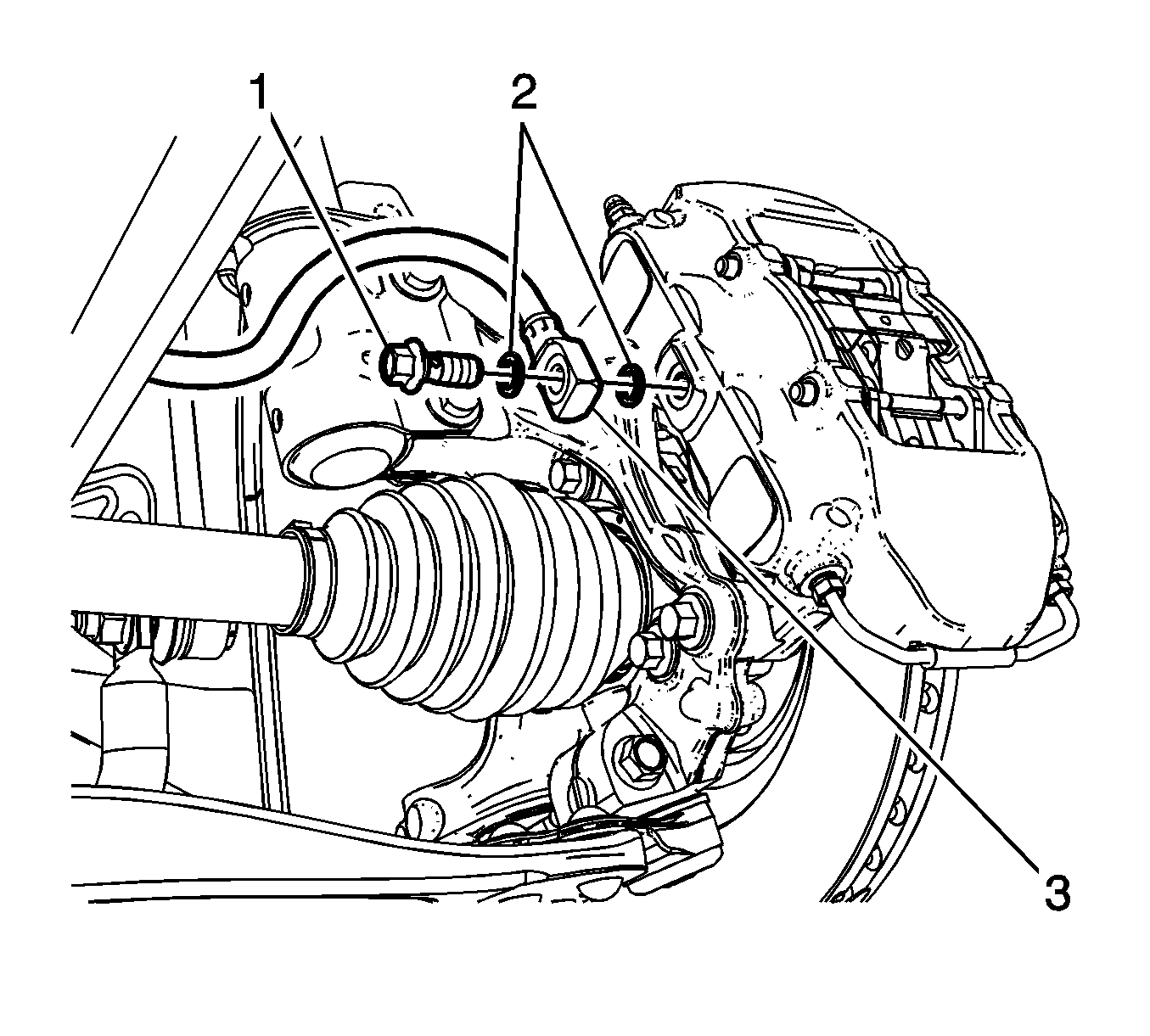
Discard the brake hose fitting gaskets.
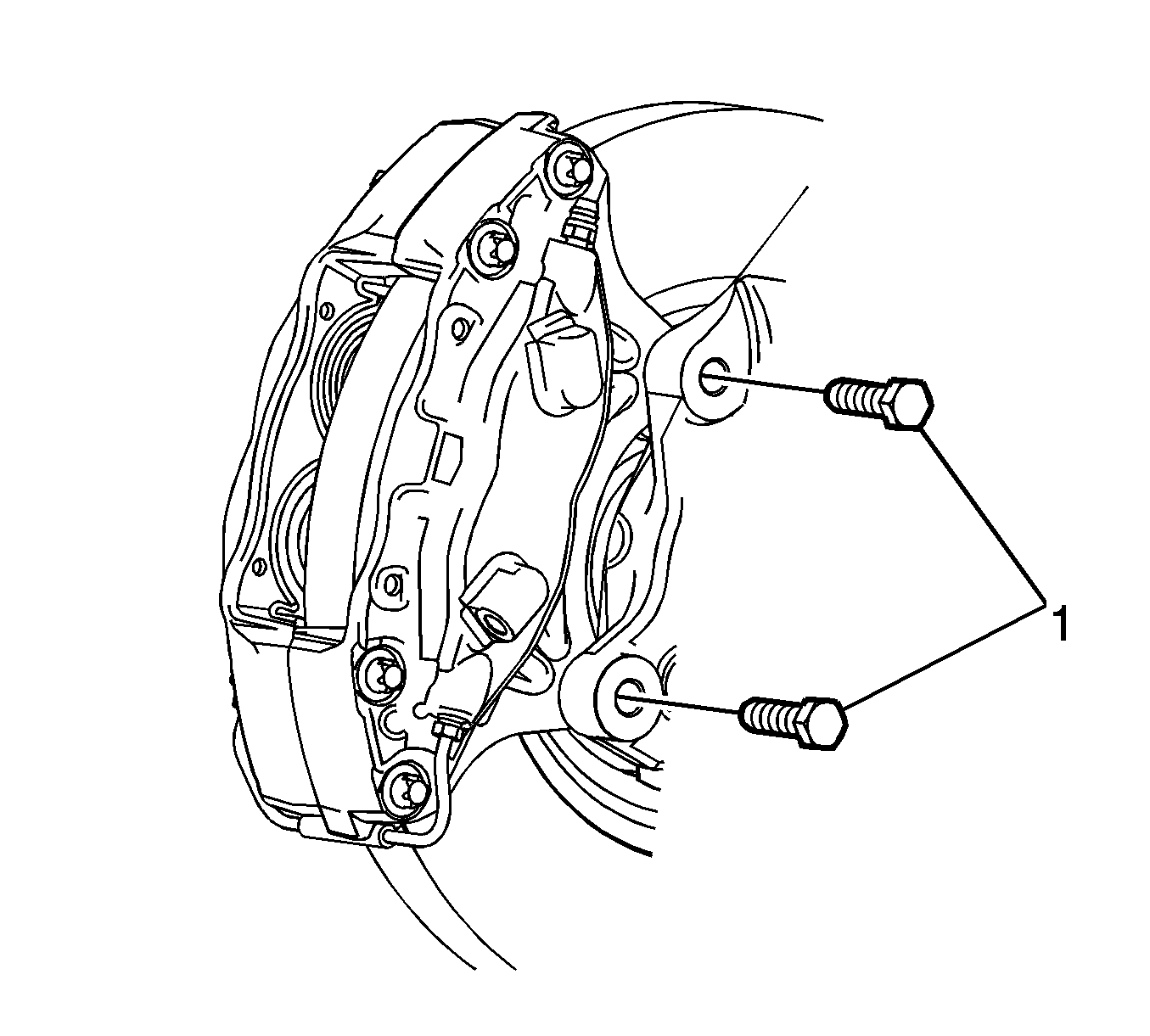
Installation Procedure
- Prepare the bolts and the threaded holes for assembly:
- Apply threadlocker GM P/N 12345493 (Canadian P/N 10953488), or equivalent to 2/3 of the threaded length of the caliper bolts. Ensure that there are no gaps in the threadlocker along the length of the filled area of the bolts.
- Allow the threadlocker to cure approximately 10 minutes before installation.
- Install the brake caliper to the wheel knuckle.
- Install the brake caliper bolts (1).
- Assemble the brake hose fitting bolt (1) and new fitting gaskets (2) to the brake hose (3).
- Install the brake hose assembly to the brake caliper.
- Install the front disc brake pads. Refer to Front Disc Brake Pads Replacement.
- Bleed the hydraulic brake system. Refer to Hydraulic Brake System Bleeding.
- With the engine OFF, gradually apply the brake pedal to approximately 2/3 of its travel distance.
- Slowly release the brake pedal.
- Wait 15 seconds, then repeat steps 10 and 11 until a firm brake pedal is obtained. This will properly seat the brake caliper pistons and brake pads.
- Install the tire and wheel assembly. Refer to Tire and Wheel Removal and Installation.
- Lower the vehicle.

Note: If reusing the brake caliper bolts the threads of the bolts and the threads of the knuckle mounting holes must be free of residue and debris prior to application of threadlocker in order to ensure proper adhesion and fastener retention.
| • | Thoroughly clean the residue from the bolt threads by using denatured alcohol or equivalent and allow to dry. |
| • | Thoroughly clean the residue from the threaded holes by using denatured alcohol or equivalent and allow to dry. |
Caution: Refer to Fastener Caution in the Preface section.
Tighten
Tighten the bolts to 130 N·m (96 lb ft).
Note: Install NEW copper brake hose gaskets.

Tighten
Tighten the fitting bolt to 40 N·m (30 lb ft).
Front Brake Caliper Replacement Without RPO LNF
Warning: Refer to Brake Dust Warning in the Preface section.
Warning: Refer to Brake Fluid Irritant Warning in the Preface section.
Removal Procedure
- Inspect the fluid level in the brake master cylinder reservoir.
- If the brake fluid level is midway between the maximum-full point and the minimum allowable level, no brake fluid needs to be removed from the reservoir before proceeding.
- If the brake fluid level is higher than midway between the maximum-full point and the minimum allowable level, remove brake fluid to the midway point before proceeding.
- Raise and support the vehicle. Refer to Lifting and Jacking the Vehicle.
- Remove the tire and wheel assembly. Refer to Tire and Wheel Removal and Installation.
- Install and firmly hand tighten 2 wheel nuts to opposite wheel studs in order to retain the rotor to the hub.
- Install a large C-clamp (1) over the body of the brake caliper (2) with the C-clamp ends against the rear of the caliper body and against the outer brake pad.
- Tighten the C-clamp until the caliper piston is compressed into the caliper bore enough to allow the caliper to slide past the brake rotor.
- Remove the C-clamp from the caliper.
- Remove the brake hose-to-caliper bolt (1) from the brake caliper.
- Remove the brake hose (3) from the brake caliper.
- Remove and discard the 2 copper brake hose gaskets (2). These gaskets may be stuck to the brake caliper and/or the brake hose end (3).
- Cap or plug the opening in the brake caliper and the brake hose to prevent fluid loss and contamination.
- Remove the brake caliper guide pin bolts (1).
- Remove the brake caliper from the caliper bracket.
- Inspect the brake caliper guide pins for freedom of movement, and inspect the condition of the guide pin boots. Move the guide pins inboard and outboard within the bracket bores, without disengaging the slides from the boots, and observe for the following:
- If any of the conditions listed are found, the brake caliper guide pins and/or boots require replacement.
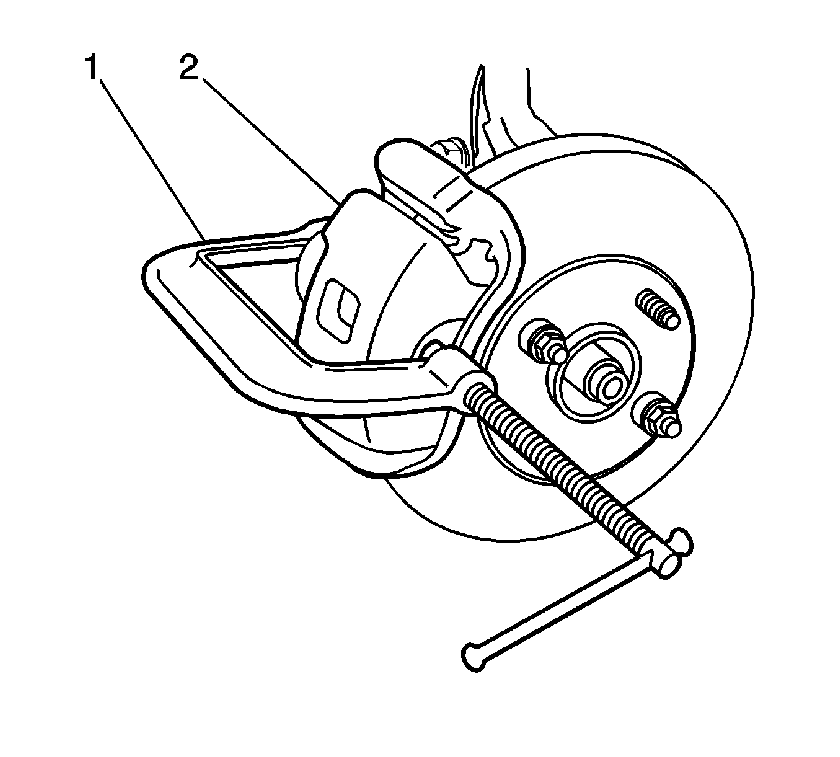
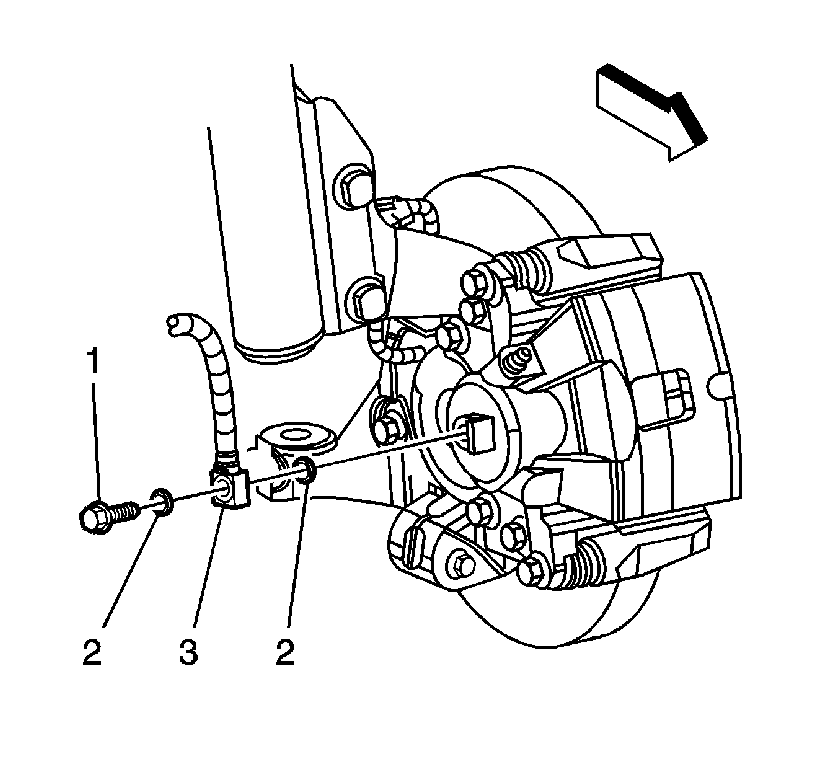
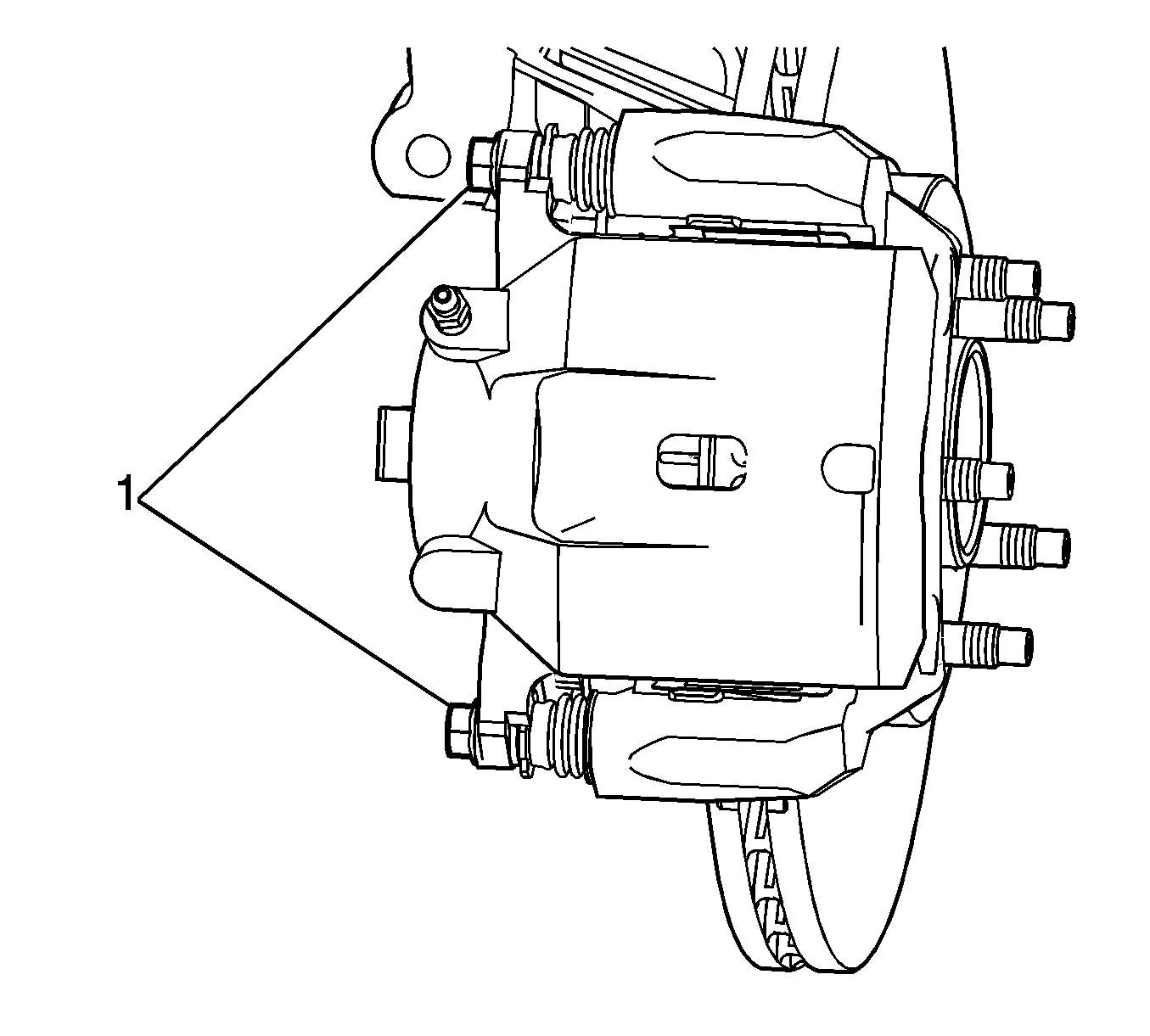
| • | Restricted caliper guide pin movement |
| • | Looseness in the brake caliper mounting bracket |
| • | Seized or binding caliper guide pins |
| • | Split or torn boots |
Installation Procedure
- Install the brake caliper to the brake caliper bracket.
- Install the brake caliper guide pin bolts (1).
- Remove the caps or plugs from the brake caliper opening and the brake hose (3).
- Install NEW copper brake hose gaskets (2) to the brake hose-to-caliper bolt (1) and to the brake hose (3).
- Install the brake hose and the brake hose-to-brake caliper bolt to the brake caliper.
- Bleed the hydraulic brake system. Refer to Hydraulic Brake System Bleeding.
- Remove the wheel nuts retaining the brake rotor to the wheel hub.
- Install the tire and wheel assembly. Refer to Tire and Wheel Removal and Installation.
- Lower the vehicle.
- With the engine OFF, gradually apply the brake pedal to approximately 2/3 of its travel distance.
- Slowly release the brake pedal.
- Wait 15 seconds, then gradually apply the brake pedal approximately 2/3 of its travel distance again until a firm brake pedal apply is obtained. This will properly seat the brake caliper pistons and brake pads.

Caution: Refer to Fastener Caution in the Preface section.
Tighten
Tighten the bolts to 34 N·m (25 lb ft).

Note: Do not reuse the copper brake hose gaskets.
Tighten
Tighten the bolt to 48 N·m (35 lb ft).
